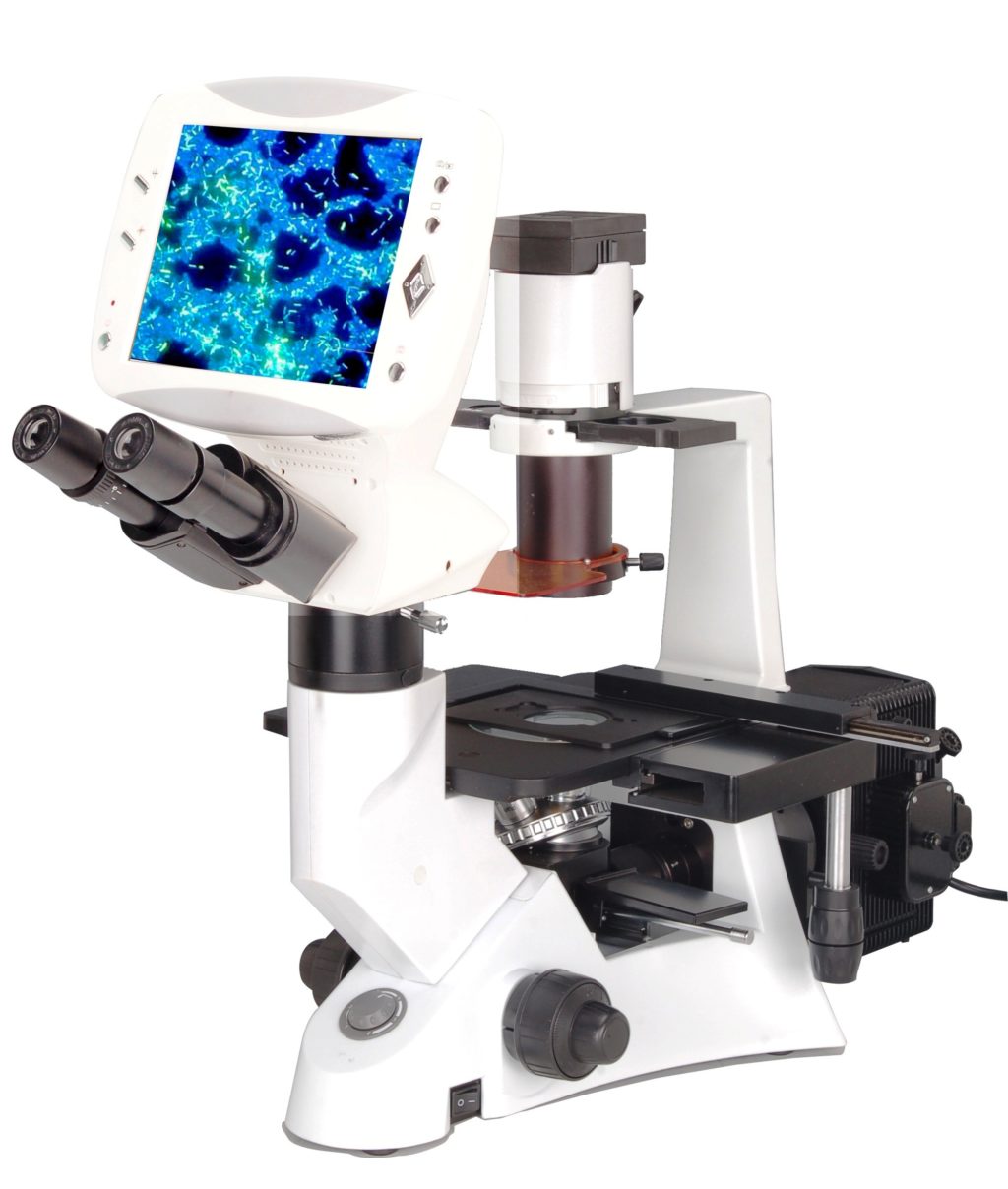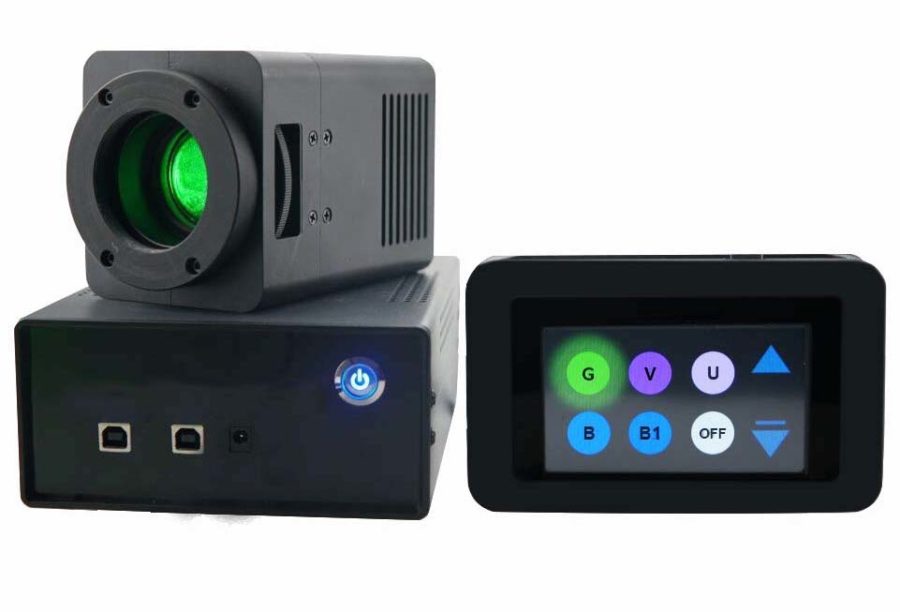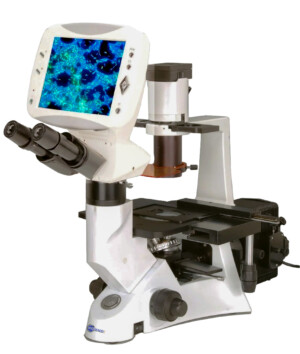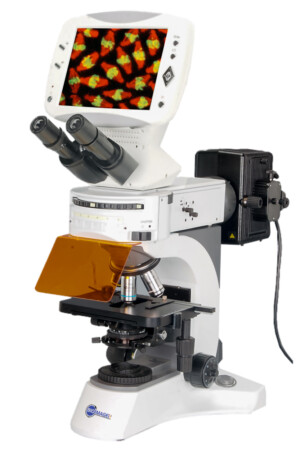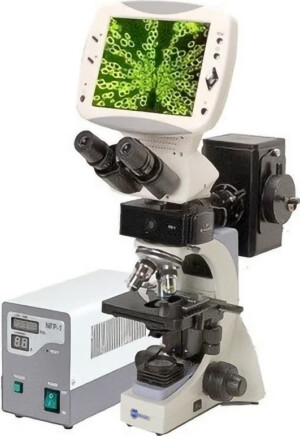Digital Fluorescence
Showing all 4 results
Showing all 4 results
Introduction to Digital Fluorescence Microscopes
A digital fluorescence microscope is a type of microscope that utilizes digital imaging technology to capture and analyze fluorescent signals from biological specimens. These microscopes are equipped with high-resolution cameras, specialized optics, and advanced software that allow for real-time imaging and analysis of fluorescent samples.
In digital fluorescence microscopy, a fluorescent sample is excited by a specific wavelength of light, causing it to emit light of a different wavelength. This emitted light is then captured by a camera and processed by advanced software that can perform a variety of image analysis tasks, such as quantifying fluorescence intensity, measuring cell size and shape, and tracking the movement of cells and organelles.
Digital fluorescence microscopes are used in a variety of applications, including cell biology, drug discovery, and medical diagnosis. They are particularly useful for studying the behavior of cells and molecules in real time, and for identifying and characterizing fluorescently labelled cells and tissues.
Overall, digital fluorescence microscopes are a powerful tool for biological research and medical diagnosis, and they have significantly advanced our understanding of the natural world and improved human health.
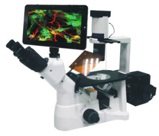
Bioimager’s digital fluorescence microscopes are compound /dissecting epi-fluorescence microscopes with a built-in digital camera and monitor/display at high-definition nor retina quality. It offers real-time fluorescence imaging and high-resolution images of your cells.
When you select a fluorescence microscope, you may take these into account:
1. What fluorophores or filters do I need?
- Emission color is normally one color/bandwidth above the excitation channel. For instances, the excitation for GFP is blue but emission is green. Similarly, we use green excitation but red emission filter for RFP/mCheery/TexasRed filters.
- We have filters from Visible to far red and infrared (300nm-1800nm), over 150 sets.
2. Do I need a multi-band filter? A dual, triple and even 5-band multi-wavelength filters are available to collect multiple channels in one shot.
3. What light source: LED or HBO? How about Xenon?
- HBO is a traditional light source with a wide spectrum of wavelength for the visible range at low cost and around 200-3000 hours lifetime.
- LED source is available from UV to IR, at the selected wavelength, with little bit extra cost from 10,000 hours lifetime up to 100,000 hours ( you will be retired from the job).
4. What type of microscope am I better to choose: stereoscope, inverted or upright? please read each category separately to find the answers.
5. More questions? Simply contact us by phone, email or live chat.
Please select the products based on your requirements from the left side list or below table:
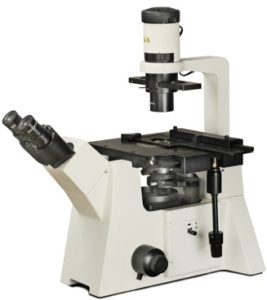 |
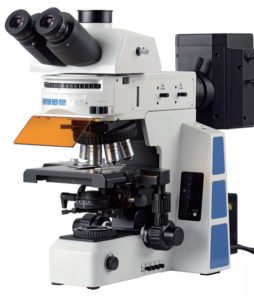 |
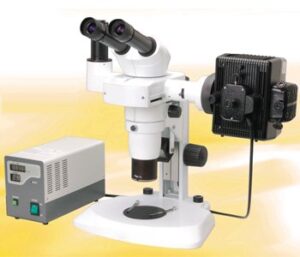 |
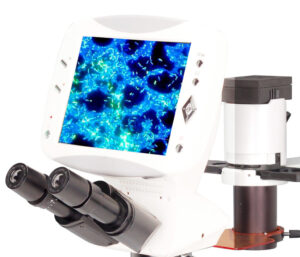 |
| Inverted Fluorescence | Upright Fluorescence | Stereo Fluorescence | Digital Fluorescence |
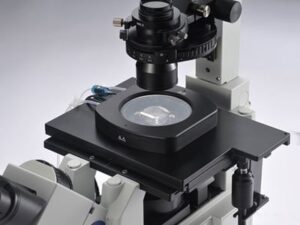 |
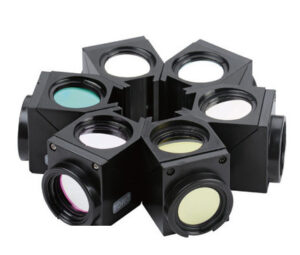 |
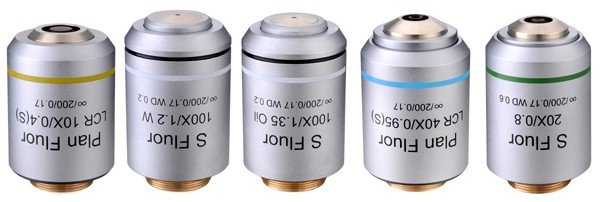 |
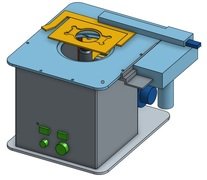 |
| Heating Stages | Fluorescence Accessories | Objective Lenses | OEM |

